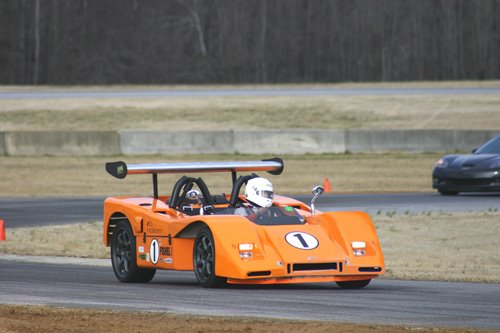 A young and enthusiastic private campaigner stopped into my shop recently to enquire if I'd be interested in helping him reach a standing mile speed record for his 4-wheel drive Evo during next month's event at the Maxton Mile near Laurenburg, North Carolina. The car he and his engine builder (Buschur Racing) have prepared generates nearly 760 HP from the surprisingly small four cylinder engine. To reach his goal of 200 mph plus, Matt's calculations indicated that it would be necessary to eliminate all possible drag factors.
A young and enthusiastic private campaigner stopped into my shop recently to enquire if I'd be interested in helping him reach a standing mile speed record for his 4-wheel drive Evo during next month's event at the Maxton Mile near Laurenburg, North Carolina. The car he and his engine builder (Buschur Racing) have prepared generates nearly 760 HP from the surprisingly small four cylinder engine. To reach his goal of 200 mph plus, Matt's calculations indicated that it would be necessary to eliminate all possible drag factors. To do this Matt proposed enclosing the underside of the car with custom aluminum panels.

In prior runs made on 1/4-mile strips Matt had achieved top speeds in the 150-160 mph range but to propel the vehicle through the remaining 50-mph of this run, the car's ability to slide smoothly through the air would be even more critical. The body of a Mitsubishi Evo is anything but streamlined in shape and the only surface available for modification, while remaining true the Street Classification, was the bottom. Turbulence caused by the air trapped beneath the car is compounded by the exposed nooks and crannies formed by the underside structures typical of all cars and is no different for the Evo.

Being part of this effort seemed like a interesting side-step from the other activities I had going in the shop so I agreed to do what I could to make the run successful. It was decided that the encasement would include a front splitter to slice the air as it hit the front of the car and a series of rear diffusers to reduce turbulence (drag) as air from the bottom and the top of the car reunite. In addition to these components it was also decided to nearly eliminate the obstacle created by the exhaust pipe by shortening it and encasing it in it's own aerodynamic shroud straight back to an exit point midway in the vehicle's overall length.

During the first weekend in April we'll witness the results of our effort as Matt takes to the track. Hopefully he will be successful but if not, I'm sure this will not be the last time he reaches for this or other speed goals in his incredibly exciting Mitsubishi Evo.

No comments:
Post a Comment